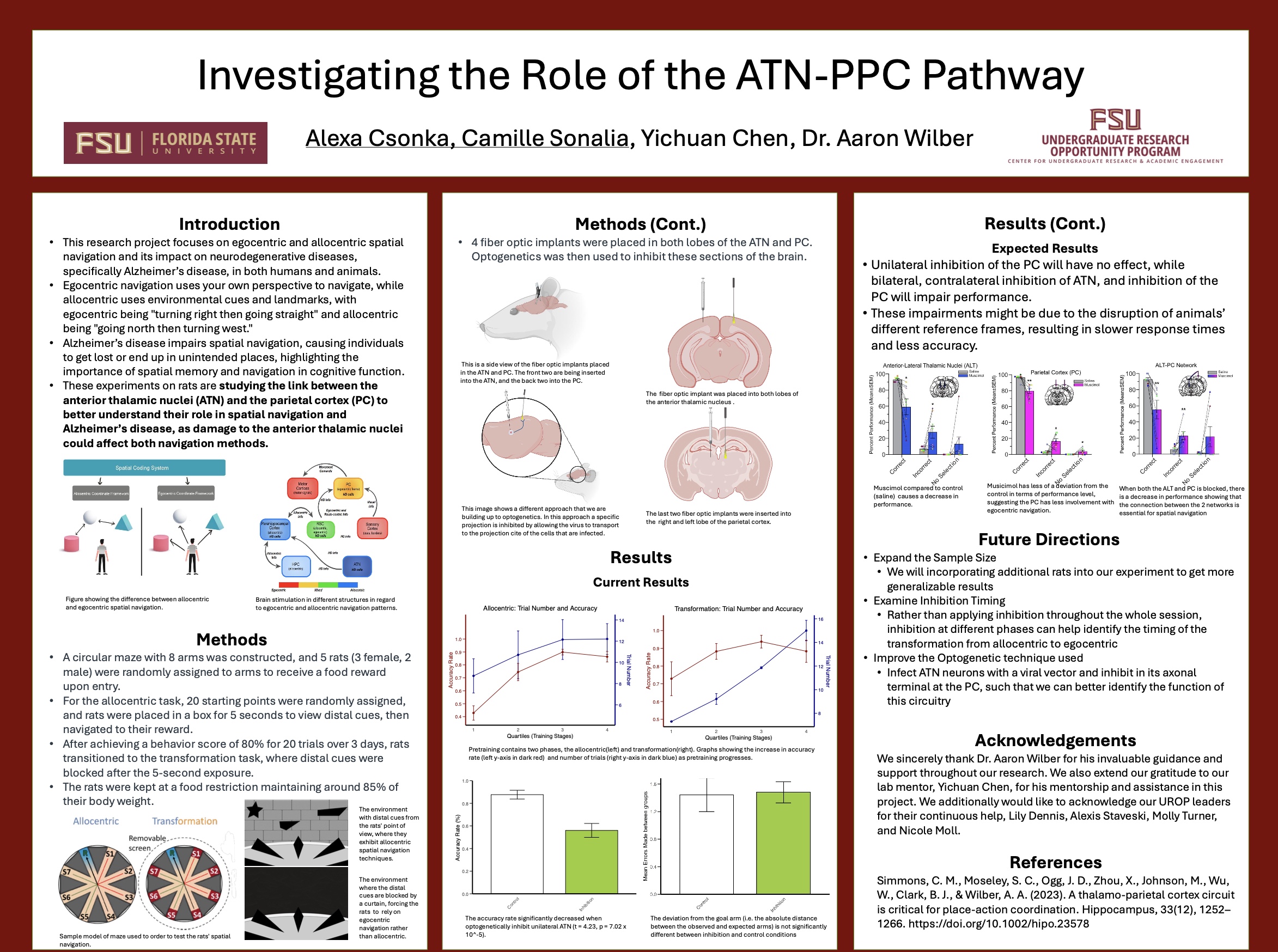Research Symposium
25th annual Undergraduate Research Symposium, April 1, 2025
Camille Sonalia Poster Session 3: 1:45 pm - 2:45 pm/ Poster #57

BIO
My name is Camille Sonalia, and I am a sophomore from Naples, Florida, studying Interdisciplinary Medical Sciences on the pre-medical track at Florida State University. I plan to graduate in 2027 and pursue medical school to fulfill my dream of becoming a physician.
I chose to participate in this research because of its real-world application to neurodegenerative diseases like Alzheimer’s, with the goal of improving patient care and quality of life. At FSU, I am an active member of Kappa Delta sorority and Phi Delta Epsilon Medical Fraternity, and I serve as the Executive Board Director of Marketing for Who We Play For. Additionally, I work as a medical assistant at Tallahassee Memorial Healthcare and volunteer with the Ronald McDonald House in Tallahassee.
Investigating the Role of the ATN-PPC Pathway
Authors: Camille Sonalia, Yichuan ChenStudent Major: IMS Clinical Professions
Mentor: Yichuan Chen
Mentor's Department: Psychology Mentor's College: College of Arts and Sciences Co-Presenters: Alexa Csonka
Abstract
Spatial navigation is the ability of animals to find a path from one location to another. It is essential for survival, from seeking food to escaping predators. Despite being common among animals, it is a complicated task requiring sensory integration, processing, and route planning. Each of these cognitive abilities relies on different parts of the brain, as well as the collaboration between them.
Previous research has shown that the anterior thalamic nuclei (ATN) and posterior parietal cortex (PPC) are important participants in spatial navigation. The ATN contains head direction cells, which are active when the animal’s head points toward a specific direction within a given environment (Taube, 1995). The firing pattern of these cells is stable, which helps identify the relative positions between objects during navigation. The PPC contains head direction cells and egocentric cells, which are active when the animal is about to execute specific movements (Wilber et al., 2014). Hence, PPC is essential for route planning and executing movements.
ATN and PPC contribute to different aspects of spatial navigation, yet their collaboration as the ATN-PPC network is still not well-studied. In this study, we use optogenetics inhibition to investigate how silencing the ATN, PPC, and ATN-PPC network affects animals in a map-to-action task (MATT). We hypothesize that ATN silencing will decrease accuracy, PPC silencing will reduce responsiveness, and ATN-PPC network silencing will cause both impairments. Preliminary results suggest that ATN inhibition will impair accuracy.
Keywords: Alzheimer's, navigation, optogenetics


